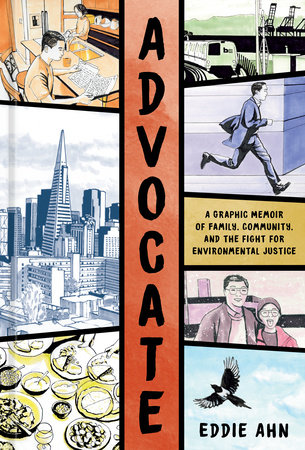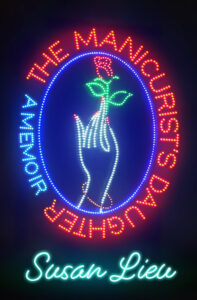
Written by Stephen Hong Sohn
Edited by Corinna Cape
Well, I know summer is on the way, because I’m starting to catch up on some reading and writing up some reviews. Let’s let the official marketing description get us situated with Eddie Ahn’s textured graphic memoir: “Born in Texas to Korean immigrants, Eddie grew up working at his family’s store with the weighty expectations that their sacrifices would be paid off when he achieved the ‘American Dream.’ Years later after moving to San Francisco and earning a coveted law degree, he then does the unthinkable: he rejects a lucrative legal career to enter the nonprofit world. In carving his own path, Eddie defies his family’s notions of economic success, igniting a struggle between family expectations, professional goals, and dreams of community. As an environmental justice attorney, he confronts the most immediate issues the country is facing today, from the devastating effects of Californian wildfires to economic inequality, all while combatting burnout and racial prejudice. In coming fully into his own, Eddie also reaches a hand back to his parents, showing them the value of a life of service rather than one spent only seeking monetary wealth. Weaving together humorous anecdotes with moments of victory and hope, this powerful, deeply contemplative full-color graphic novel explores the relationship between immigration and activism, opportunity and obligation, and familial duty and community service.”
I’m always looking for new material to add to my race and graphic narrative course; this one definitely fits the bill. What I especially love about this graphic narrative is the honesty with which Ahn is able to articulate the complications of parental expectations against his growing sense of ethics and duty. In this particular case, you can fully understand why his parents are driven so much by the importance of the money that Eddie can make. His parents’ business fails, and they end up divorcing. In the wake of these personal tribulations, Eddie’s career seems to be one of the few, clear bright spots, so he becomes the beacon of hope for the family at large. Of course, working at the intersections of social justice, nonprofits, and environmental law is not necessarily lucrative, so the Ahn’s text finds its rich foundation on this particular site of tension. Ahn’s professional trajectory is ultimately very intriguing and offers much in terms of the so-called “model minority narrative” and how it is finally subverted. Ahn’s artistic approach to the memoir is notable. He reminds me most of Tomine in the use of standard, geometric panels; his icons and images tend toward realism (rather than a cartoon-ish style), which is fitting for this work given the content. I always appreciate diving into a new graphic memoir, and this one is definitely a standout. Highly recommend!
Buy the Book Here



